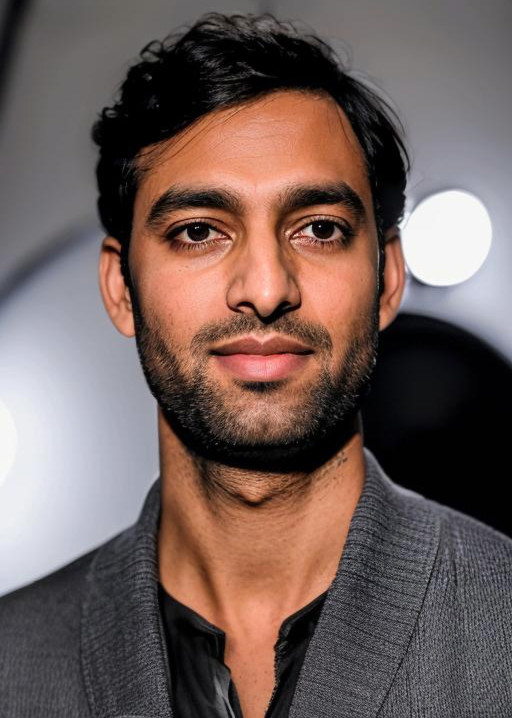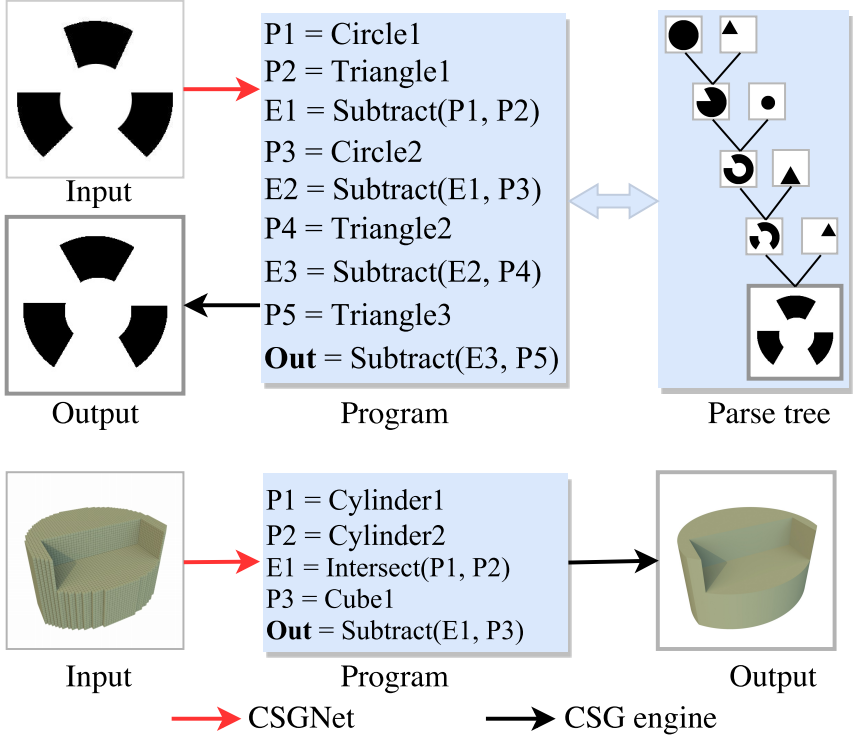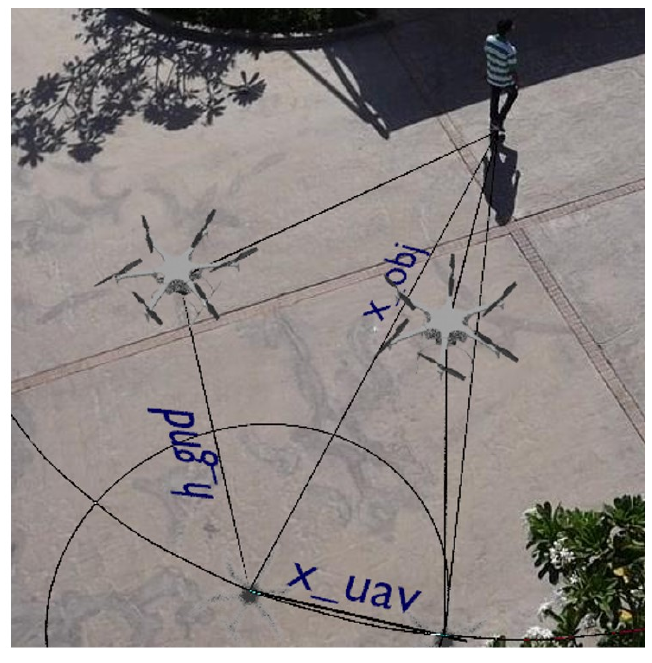My research lies at the intersection of machine learning, computer vision and computer graphics.
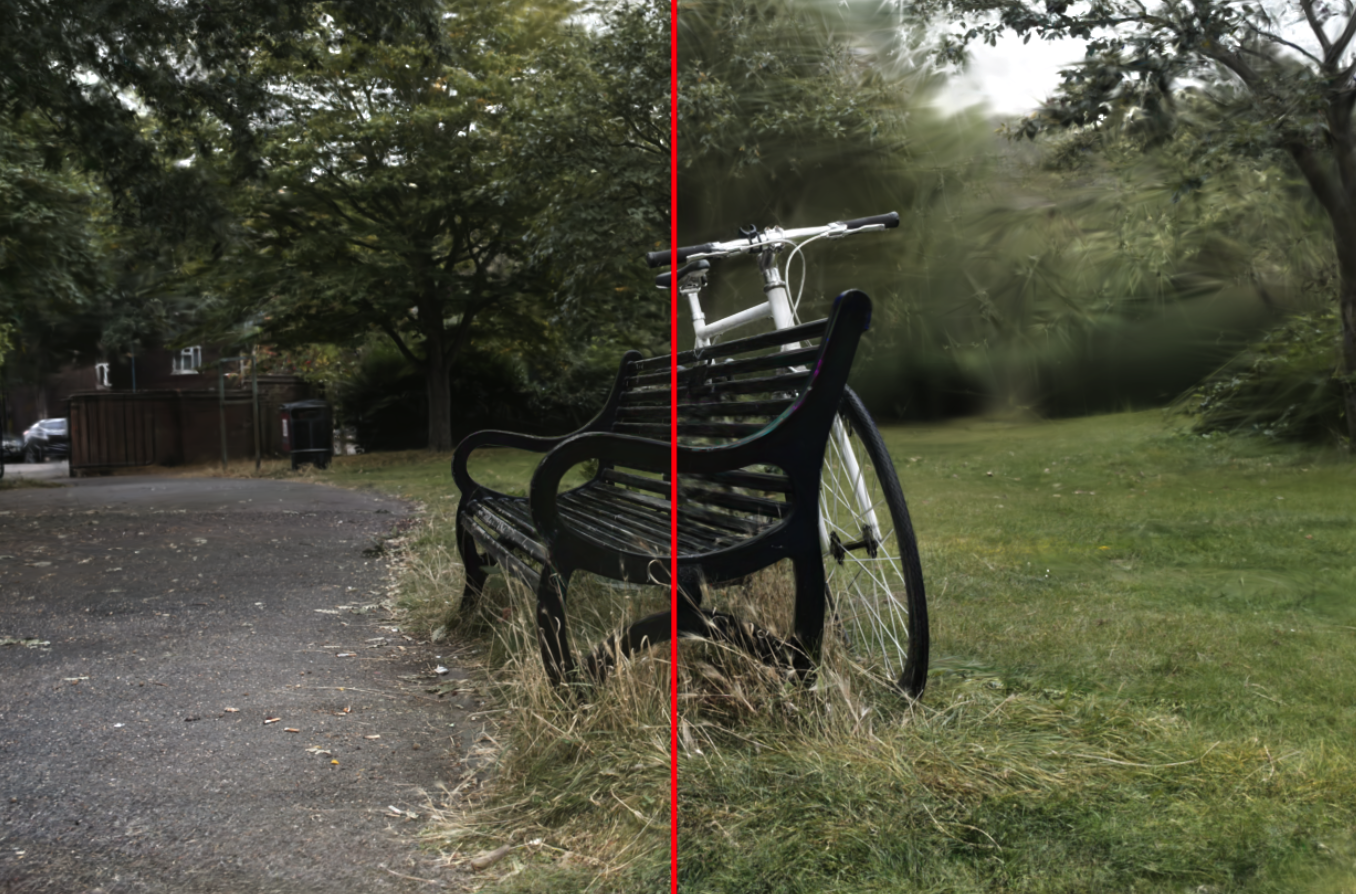
|
3D Gaussian Splatting as Markov Chain Monte Carlo
Shakiba Kheradmand, Daniel Rebain, Gopal Sharma, Weiwei Sun, Jeff Tseng, Hossam Isack, Abhishek Kar, Andrea Tagliasacchi, Kwang Moo Yi
NeurIPS 2024, Webpage
Abstract
While 3D Gaussian Splatting has recently become popular for neural rendering, current methods rely on carefully engineered cloning and splitting strategies for placing Gaussians, which does not always generalize and may lead to poor-quality renderings. In addition, for real-world scenes, they rely on a good initial point cloud to perform well. In this work, we rethink 3D Gaussians as random samples drawn from an underlying probability distribution describing the physical representation of the scene -- in other words, Markov Chain Monte Carlo (MCMC) samples. Under this view, we show that the 3D Gaussian updates are strikingly similar to a Stochastic Langevin Gradient Descent (SGLD) update. As with MCMC, samples are nothing but past visit locations, adding new Gaussians under our framework can simply be realized without heuristics as placing Gaussians at existing Gaussian locations. To encourage using fewer Gaussians for efficiency, we introduce an L1-regularizer on the Gaussians. On various standard evaluation scenes, we show that our method provides improved rendering quality, easy control over the number of Gaussians, and robustness to initialization.
|
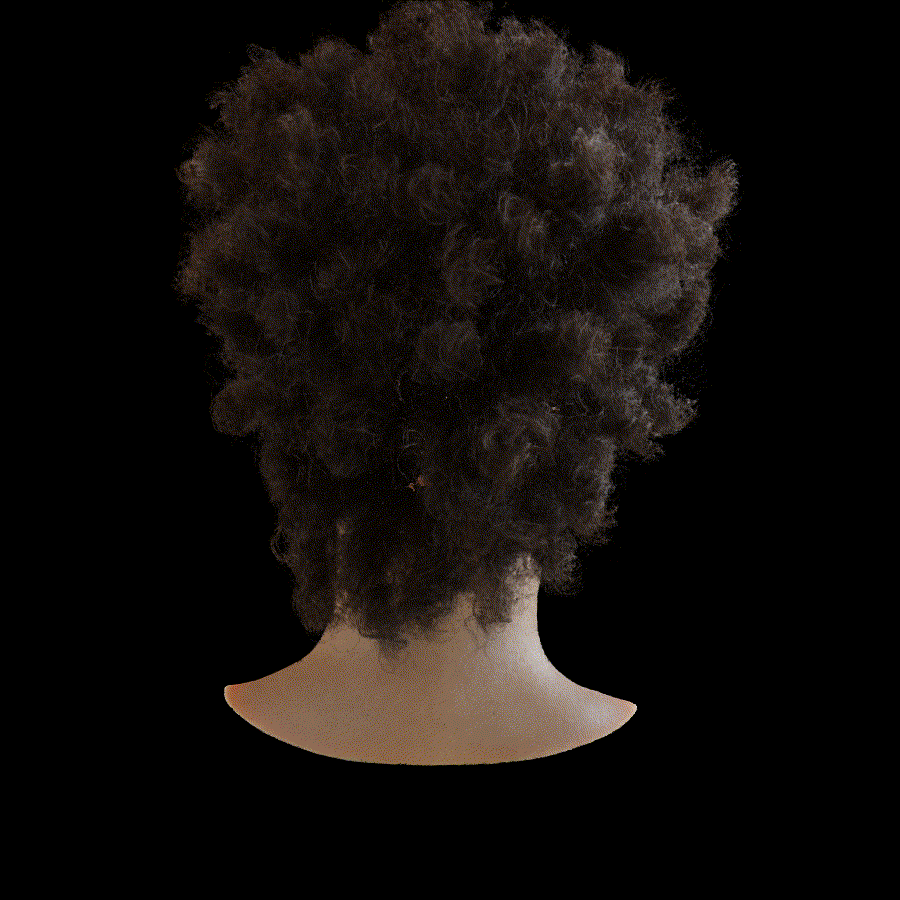
|
Volumetric Rendering with Baked Quadrature Fields
Gopal Sharma, Daniel Rebain, Andrea Tagliasacchi, Kwang Moo Yi.
ECCV 2024, Webpage
Abstract
We propose a novel Neural Radiance Field (NeRF) representation for non-opaque scenes that allows fast inference by utilizing textured polygons. Despite the high-quality novel view rendering that NeRF provides, a critical limitation is that it relies on volume rendering that can be computationally expensive and does not utilize the advancements in modern graphics hardware. Existing methods for this problem fall short when it comes to modelling volumetric effects as they rely purely on surface rendering. We thus propose to model the scene with polygons, which can then be used to obtain the quadrature points required to model volumetric effects, and also their opacity and colour from the texture. To obtain such polygonal mesh, we train a specialized field whose zero-crossings would correspond to the quadrature points when volume rendering, and perform marching cubes on this field. We then rasterize the polygons and utilize the fragment shaders to obtain the final colour image. Our method allows rendering on various devices and easy integration with existing graphics frameworks while keeping the benefits of volume rendering alive.
|
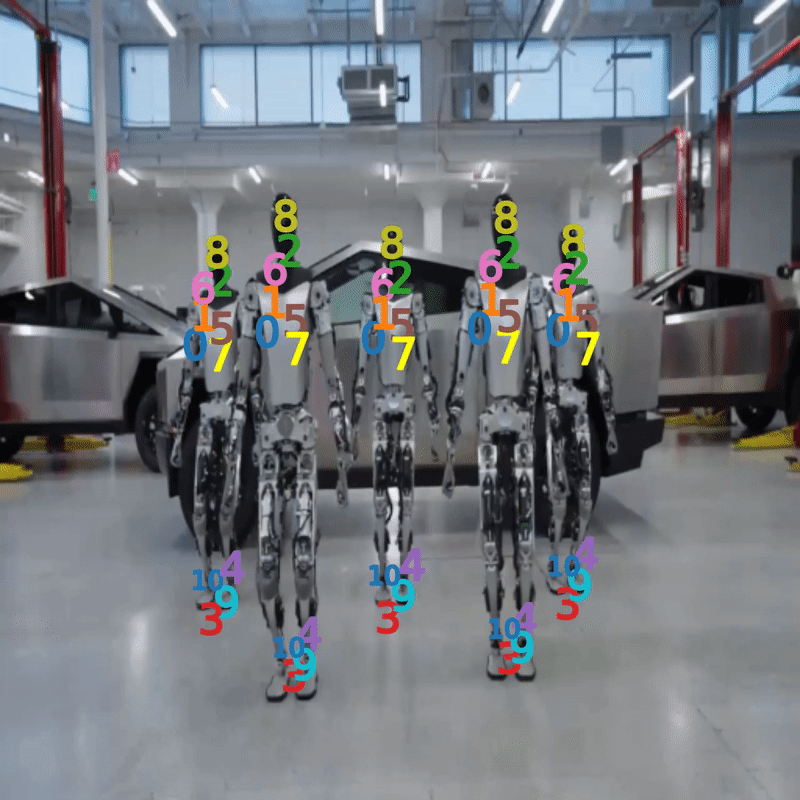
|
Unsupervised Keypoints from Pretrained Diffusion Models
Eric Hedlin, Gopal Sharma, Shweta Mahajan, Xingzhe He, Hossam Isack, Abhishek Kar,
Helge Rhodin, Andrea Tagliasacchi, Kwang Moo Yi.
CVPR 2024, Webpage
Abstract
Unsupervised learning of keypoints and landmarks has seen significant progress with the help of modern neural network architectures, but performance is yet to match the supervised counterpart, making their practicability questionable. We leverage the emergent knowledge within text-to-image diffusion models, towards more robust unsupervised keypoints. Our core idea is to find text embeddings that would cause the generative model to consistently attend to compact regions in images (i.e. keypoints). To do so, we simply optimize the text embedding such that the cross-attention maps within the denoising network are localized as Gaussians with small standard deviations. We validate our performance on multiple dataset: the CelebA, CUB-200-2011, Tai-Chi-HD, DeepFashion, and Human3.6m datasets. We achieve significantly improved accuracy, sometimes even outperforming supervised ones, particularly for data that is non-aligned and less curated.
|
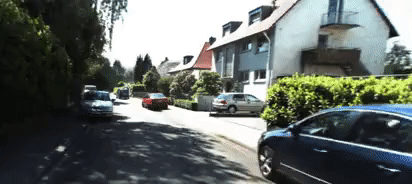
|
PointNeRF++: A multi-scale, point-based Neural Radiance Field
Weiwei Sun, Eduard Trulls, Yang-Che Tseng, Sneha Sambandam, Gopal Sharma, Andrea Tagliasacchi, Kwang Moo Yi.
ECCV 2024, Webpage
Abstract
Point clouds offer an attractive source of information to complement images in neural scene representations, especially when few images are available. Neural rendering methods based on point clouds do exist, but they do not perform well when the point cloud quality is low---e.g., sparse or incomplete, which is often the case with real-world data. We overcome these problems with a simple representation that aggregates point clouds at multiple scale levels with sparse voxel grids at different resolutions. To deal with point cloud sparsity, we average across multiple scale levels---but only among those that are valid, i.e., that have enough neighboring points in proximity to the ray of a pixel. To help model areas without points, we add a global voxel at the coarsest scale, thus unifying ``classical'' and point-based NeRF formulations.
|
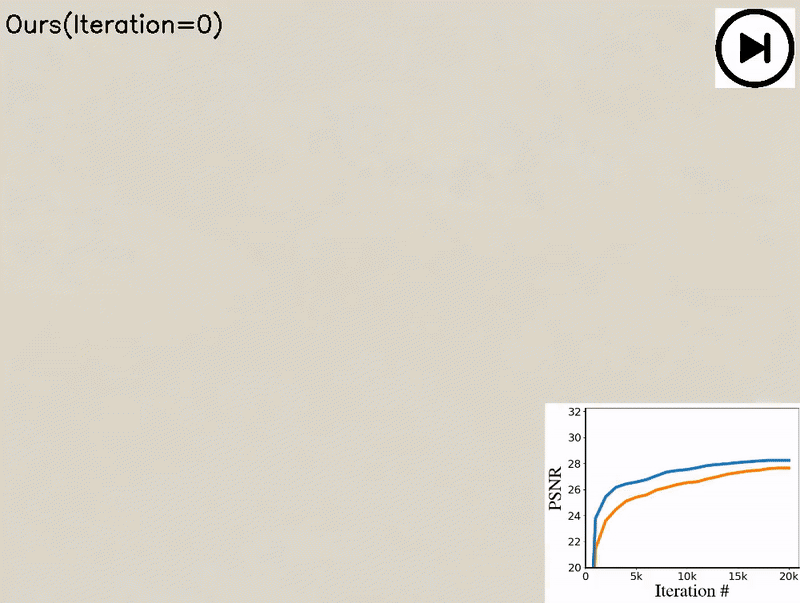
|
Accelerating Neural Field Training via Soft Mining
Shakiba Kheradmand, Daniel Rebain, Gopal Sharma, Hossam Isack, Abhishek Kar
Andrea Tagliasacchi, Kwang Moo Yi
CVPR 2024, Webpage
Abstract
We present an approach to accelerate Neural Field training by efficiently selecting sampling locations. While Neural Fields have recently become popular, it is often trained by uniformly sampling the training domain, or through handcrafted heuristics. We show that improved convergence and final training quality can be achieved by a soft mining technique based on importance sampling: rather than either considering or ignoring a pixel completely, we weigh the corresponding loss by a scalar. To implement our idea we use Langevin Monte-Carlo sampling. We show that by doing so, regions with higher error are being selected more frequently, leading to more than 2x improvement in convergence speed.
|
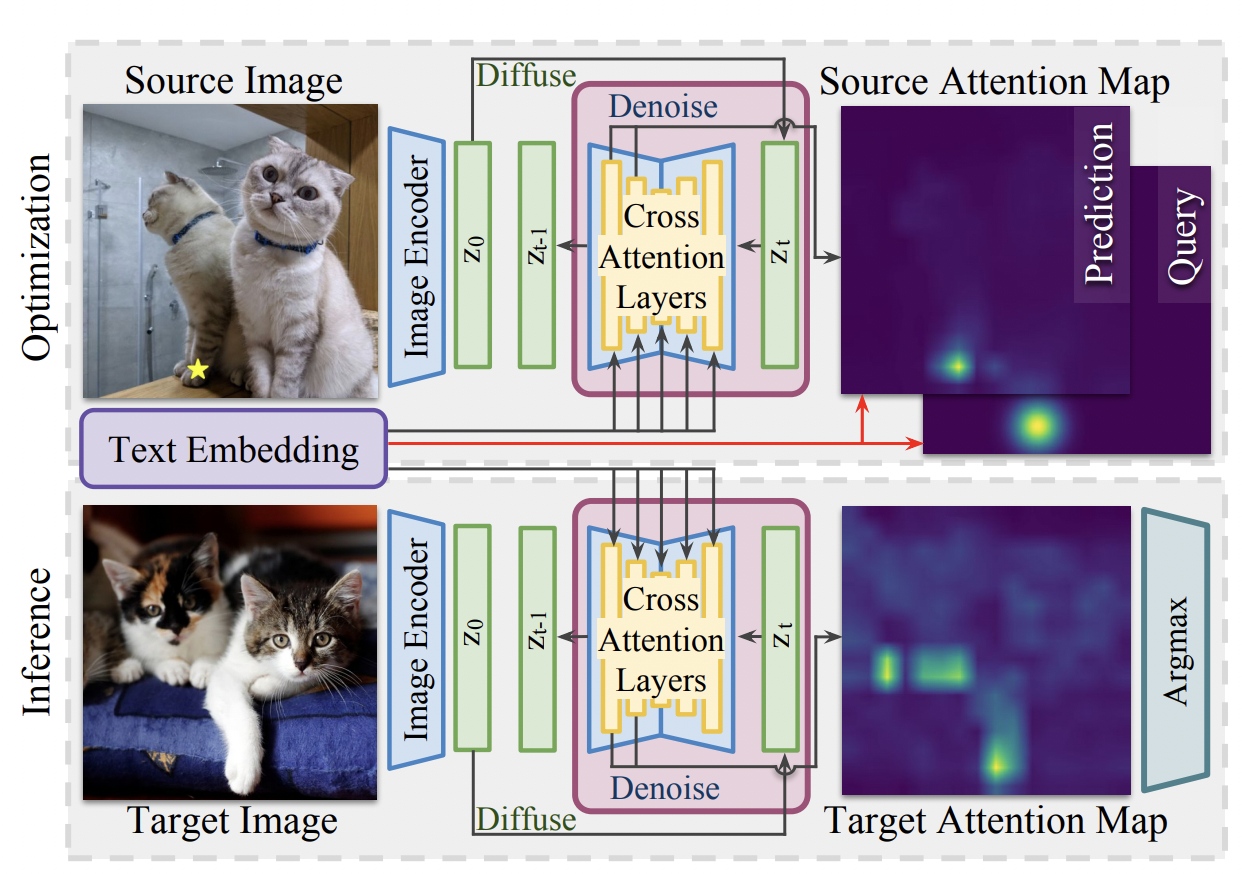
|
Unsupervised Semantic Correspondence Using Stable Diffusion
Eric Hedlin, Gopal Sharma, Shweta Mahajan, Hossam Isack, Abhishek Kar, Andrea Tagliasacchi, Kwang Moo Yi.
NeurIPS 2023, Webpage
Abstract
Text-to-image diffusion models are now capable of generating images that are often indistinguishable from real images. To generate such images, these models must understand the semantics of the objects they are asked to generate. In this work we show that, without any training, one can leverage this semantic knowledge within diffusion models to find semantic correspondences -- locations in multiple images that have the same semantic meaning. Specifically, given an image, we optimize the prompt embeddings of these models for maximum attention on the regions of interest. These optimized embeddings capture semantic information about the location, which can then be transferred to another image. By doing so we obtain results on par with the strongly supervised state of the art on the PF-Willow dataset and significantly outperform (20.9% relative for the SPair-71k dataset) any existing weakly or unsupervised method on PF-Willow, CUB-200 and SPair-71k datasets.
|
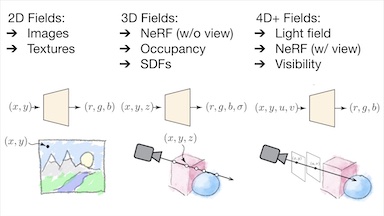
|
Attention Beats Concatenation for Conditioning Neural Fields
Daniel Rebain, Mark J. Matthews, Kwang Moo Yi, Gopal Sharma, Dmitry Lagun, Andrea Tagliasacchi
TMLR 2023,
Abstract
Neural fields model signals by mapping coordinate inputs to sampled values. They are becoming an increasingly important backbone architecture across many fields from vision and graphics to biology and astronomy. In this paper, we explore the differences between common conditioning mechanisms within these networks, an essential ingredient in shifting neural fields from memorization of signals to generalization, where the set of signals lying on a manifold is modelled jointly. In particular, we are interested in the scaling behaviour of these mechanisms to increasingly high-dimensional conditioning variables. As we show in our experiments, high-dimensional conditioning is key to modelling complex data distributions, thus it is important to determine what architecture choices best enable this when working on such problems. To this end, we run experiments modelling 2D, 3D, and 4D signals with neural fields, employing concatenation, hyper-network, and attention-based conditioning strategies -- a necessary but laborious effort that has not been performed in the literature. We find that attention-based conditioning outperforms other approaches in a variety of settings.
|
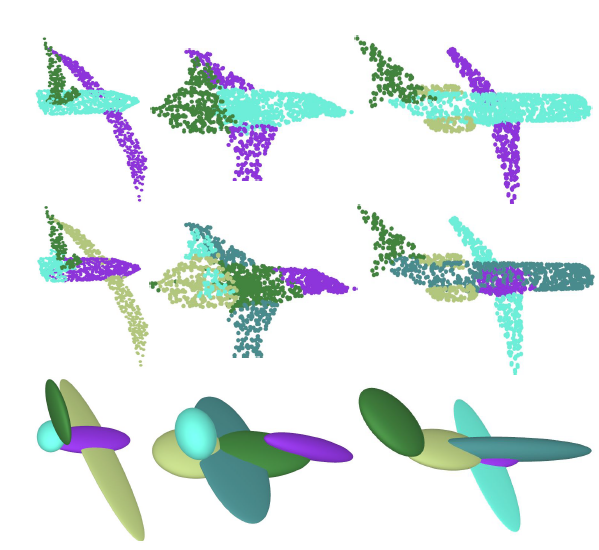
|
PRIFIT: Learning to Fit Primitives Improves Few Shot Point Cloud Segmentation
Gopal Sharma*, Bidya Dash*, Matheus Gadelha, Aruni RoyChowdhury, Marios Loizou, Evangelos Kalogerakis, Liangliang Cao, Erik Learned-Miller, Rui Wang and Subhransu Maji.
SGP 2022, Webpage
Abstract
We present PriFit, a simple approach for label efficient learning of 3D shape segmentation networks. PriFit is based on a self-supervised task of decomposing the surface of a 3D shape into geometric primitives.
It can be readily applied to existing network architectures for 3D shape segmentation,
and improves their performance in the few-shot setting, as we demonstrate in the widely used ShapeNet and PartNet benchmarks.
PriFit outperforms the prior state-of-the-art in this setting, suggesting that decomposability into primitives is a useful prior for learning representations predictive of semantic parts.
We present a number of experiments varying the choice of geometric primitives and downstream tasks to demonstrate the effectiveness of the method.
|
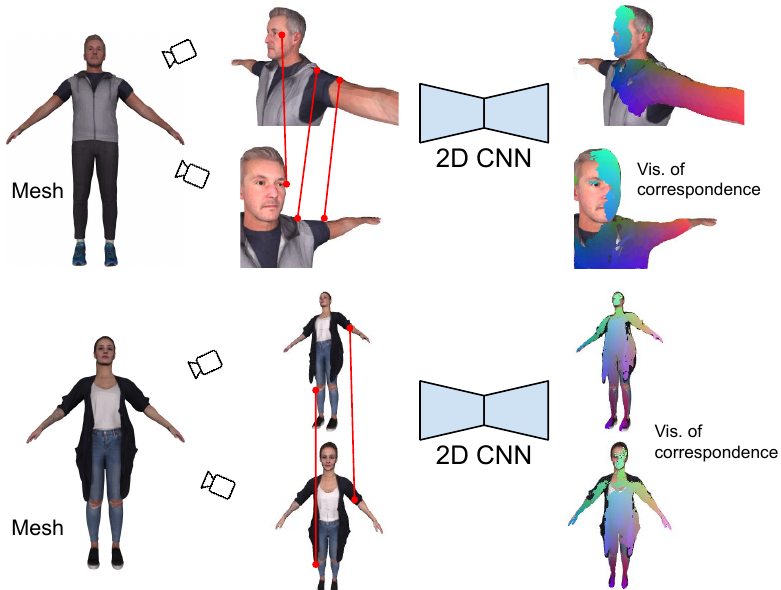
|
MvDeCor: Multi-view Dense Correspondence Learning for Fine-grained 3D Segmentation
Gopal Sharma, Kangxue Yin, Subhransu Maji, Evangelos Kalogerakis, Or Litany, and Sanja Fidler
ECCV 2022, Webpage
Abstract
We propose to utilize self-supervised techniques in the 2D domain for
fine-grained 3D shape segmentation tasks. This is inspired by the
observation that view-based surface representations are more effective
at modeling high-resolution surface details and texture than their 3D
counterparts based on point clouds or voxel occupancy. Specifically,
given a 3D shape, we render it from multiple views, and set up a dense
correspondence learning task within the contrastive learning
framework. As a result, the learned 2D representations are
view-invariant and geometrically consistent, leading to better
generalization when trained on a limited number of labeled shapes than
alternatives based on self-supervision in 2D or 3D alone. Experiments
on textured (RenderPeople) and untextured (PartNet) 3D datasets show
that our method outperforms state-of-the-art alternatives in
fine-grained part segmentation. The improvements over baselines are
greater when only a sparse set of views is available for training or
when shapes are textured, indicating that MvDeCor benefits from both 2D
processing and 3D geometric reasoning.
|
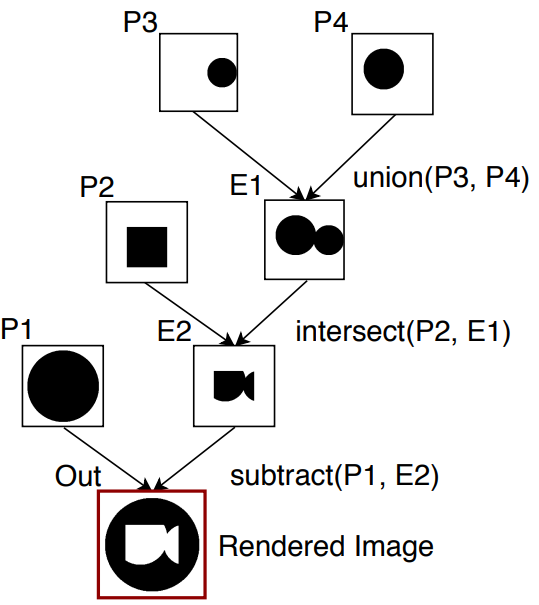
|
Neural Shape Parsers for Constructive Solid Geometry
Gopal Sharma, Rishabh Goyal, Difan Goyal, Evangelos Kalogerakis and Subhransu Maji
TPAMI, Paper
Abstract
Constructive Solid Geometry (CSG) is a geometric modeling technique that defines complex shapes by recursively applying boolean operations on primitives such as spheres and cylinders. We present CSGNet, a deep network architecture that takes as input a 2D or 3D shape and outputs a CSG program that models it. Parsing shapes into CSG programs is desirable as it yields a compact and interpretable generative model. However, the task is challenging since the space of primitives and their combinations can be prohibitively large. CSGNet uses a convolutional encoder and recurrent decoder based on deep networks to map shapes to modeling instructions in a feed-forward manner and is significantly faster than bottom-up approaches. We investigate two architectures for this task — a vanilla encoder (CNN) - decoder (RNN) and another architecture that augments the encoder with an explicit memory module based on the program execution stack. The stack augmentation improves the reconstruction quality of the generated shape and learning efficiency. Our approach is also more effective as a shape primitive detector compared to a state-of-the-art object detector. Finally, we demonstrate CSGNet can be trained on novel datasets without program annotations through policy gradient techniques.
Cite
@ARTICLE{9293398,
author={G. {Sharma} and R. {Goyal} and D. {Liu} and E. {Kalogerakis} and S. {Maji}},
journal={IEEE Transactions on Pattern Analysis and Machine Intelligence},
title={Neural Shape Parsers for Constructive Solid Geometry},
year={2020},
volume={},
number={},
pages={1-1},
doi={10.1109/TPAMI.2020.3044749}}
|
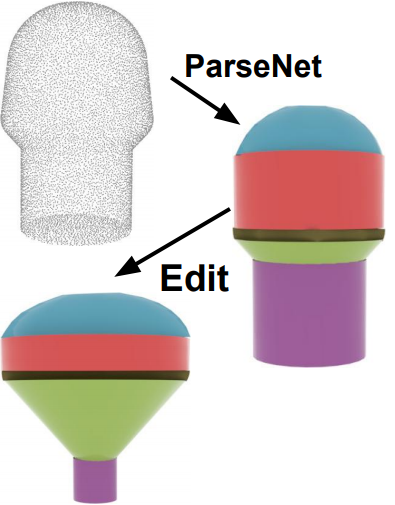
|
ParSeNet: A Parametric Surface Fitting Network for 3D Point Clouds
Gopal Sharma ,
Difan Liu,
Evangelos Kalogerakis,
Subhransu Maji,
Siddhartha Chaudhuri and
Radomír Měch
ECCV 2020, Paper
Abstract
We propose a novel, end-to-end trainable, deep network called ParSeNet that decomposes a 3D point cloud into parametric surface patches, including B-spline patches as well as basic geometric primitives. ParSeNet is trained on a large-scale dataset of man-made 3D shapes and captures high-level semantic priors for shape decomposition. It handles a much richer class of primitives than prior work, and allows us to represent surfaces with higher fidelity. It also produces repeatable and robust parametrizations of a surface compared to purely geometric approaches. We present extensive experiments to validate our approach against analytical and learning-based alternatives.
Cite
@misc{sharma2020parsenet,
title={ParSeNet: A Parametric Surface Fitting Network for 3D Point Clouds},
author={Gopal Sharma and Difan Liu and Evangelos Kalogerakis and Subhransu Maji and Siddhartha Chaudhuri and Radomír Měch},
year={2020},
eprint={2003.12181},
archivePrefix={arXiv},
primaryClass={cs.CV}
}
|
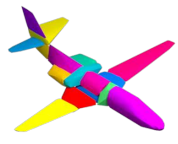
|
Label-Efficient Learning on Point Clouds using Approximate Convex Decompositions
Matheus Gadelha*, Aruni RoyChowdhury*, Gopal Sharma , Evangelos Kalogerakis, Liangliang Cao, Erik Learned-Miller, Rui Wang, Subhransu Maji
ECCV 2020, Paper
Abstract
The problems of shape classification and part segmentation from 3D point clouds have garnered increasing attention in the last few years. But both of these problems suffer from relatively small training sets, creating the need for statistically efficient methods to learn 3D shape representations. In this work, we investigate the use of Approximate Convex Decompositions (ACD) as a self-supervisory signal for label-efficient learning of point cloud representations. Decomposing a 3D shape into simpler constituent parts or primitives is a fundamental problem in geometrical shape processing. There has been extensive work on such decompositions, where the criterion for simplicity of a constituent shape is often defined in terms of convexity for solid primitives. In this paper, we show that using the results of ACD to approximate a ground truth segmentation provides excellent self-supervision for learning 3D point cloud representations that are highly effective on downstream tasks. We report improvements over the state-of-theart in unsupervised representation learning on the ModelNet40 shape classification dataset and significant gains in few-shot part segmentation on the ShapeNetPart dataset.
Cite
@misc{gadelha2020labelefficient,
title={Label-Efficient Learning on Point Clouds using Approximate Convex Decompositions},
author={Matheus Gadelha and Aruni RoyChowdhury and Gopal Sharma and Evangelos Kalogerakis and Liangliang Cao and Erik Learned-Miller and Rui Wang and Subhransu Maji},
year={2020},
eprint={2003.13834},
archivePrefix={arXiv},
primaryClass={cs.CV}
}
|
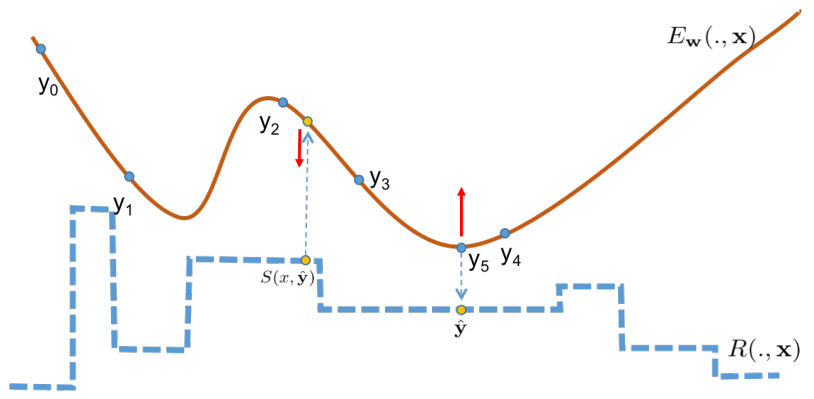
|
Search-Guided, Lightly-supervised Training of Structured Prediction Energy Networks
Amirmohammad Rooshenas, Dongxu Zhang, Gopal Sharma, and Andrew McCallum
NeurIPS 2019, Paper
Abstract
In structured output prediction tasks, labeling ground-truth training output is often expensive. However, for many tasks, even when the true output is unknown, we can evaluate predictions using a scalar reward function, which may be easily assembled from human knowledge or non-differentiable pipelines. But searching through the entire output space to find the best output with respect to this reward function is typically intractable. In this paper, we instead use efficient truncated randomized search in this reward function to train structured prediction energy networks (SPENs), which provide efficient test-time inference using gradient-based search on a smooth, learned representation of the score landscape, and have previously yielded state-of-the-art results in structured prediction. In particular, this truncated randomized search in the reward function yields previously unknown local improvements, providing effective supervision to SPENs, avoiding their traditional need for labeled training data.
Cite
@incollection{NIPS2019_9507,
title = {Search-Guided, Lightly-Supervised Training of Structured Prediction Energy Networks},
author = {Rooshenas, Amirmohammad and Zhang, Dongxu and Sharma, Gopal and McCallum, Andrew},
booktitle = {Advances in Neural Information Processing Systems 32},
editor = {H. Wallach and H. Larochelle and A. Beygelzimer and F. d\textquotesingle Alch\'{e}-Buc and E. Fox and R. Garnett},
pages = {13522--13532},
year = {2019},
publisher = {Curran Associates, Inc.},
url = {http://papers.nips.cc/paper/9507-search-guided-lightly-supervised-training-of-structured-prediction-energy-networks.pdf}
}
|
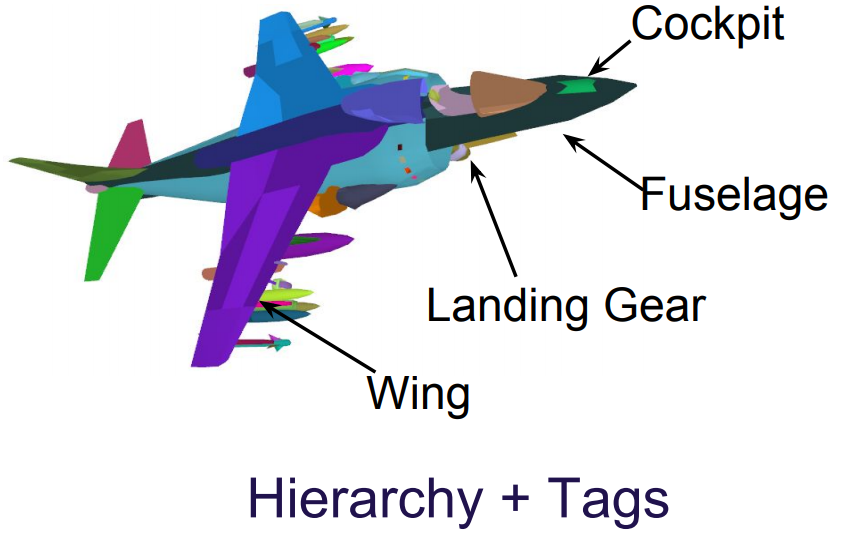
|
Learning Point Embeddings from Shape Repositories for Few-Shot Segmentation
Gopal Sharma, Evangelos Kalogerakis and Subhransu Maji.
3DV 2019, Paper
Abstract
User generated 3D shapes in online repositories contain rich information about surfaces, primitives, and their geometric relations, often arranged in a hierarchy. We present a framework for learning representations of 3D shapes that reflect the information present in this meta data and show that it leads to improved generalization for semantic segmentation tasks. Our approach is a point embedding network that generates a vectorial representation of the 3D points such that it reflects the grouping hierarchy and tag data. The main challenge is that the data is noisy and highly variable. To this end, we present a tree-aware metric-learning approach and demonstrate that such learned embeddings offer excellent transfer to semantic segmentation tasks, especially when training data is limited. Our approach reduces the relative error by 10.2% with 8 training examples, by 11.72% with 120 training examples on the ShapeNet semantic segmentation benchmark, in comparison to the network trained from scratch. By utilizing tag data the relative error is reduced by 12.8% with 8 training examples, in comparison to the network trained from scratch. These improvements come at no additional labeling cost as the meta data is freely available.
Cite
@INPROCEEDINGS{8885650,
author={G. {Sharma} and E. {Kalogerakis} and S. {Maji}},
booktitle={2019 International Conference on 3D Vision (3DV)},
title={Learning Point Embeddings from Shape Repositories for Few-Shot Segmentation},
year={2019},
volume={},
number={},
pages={67-75},}
|
